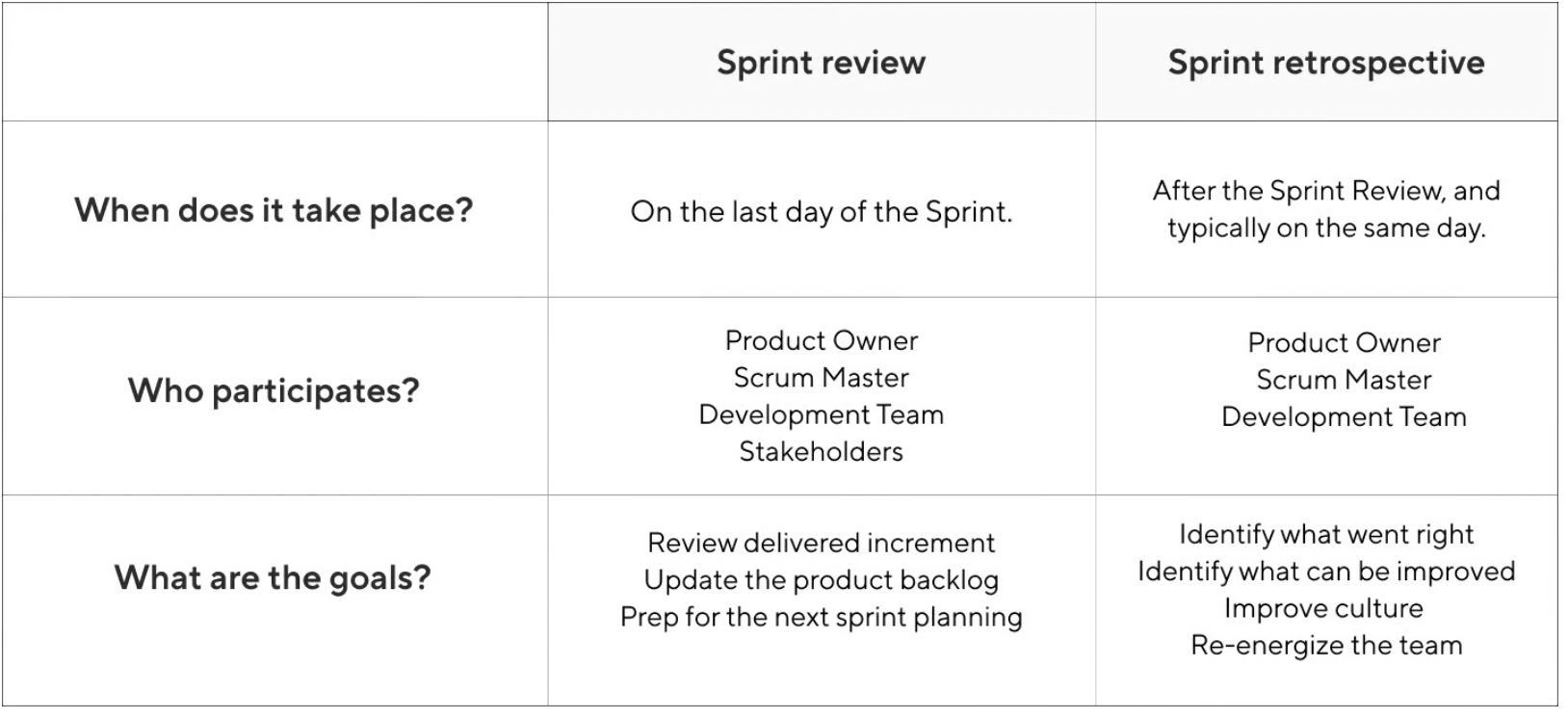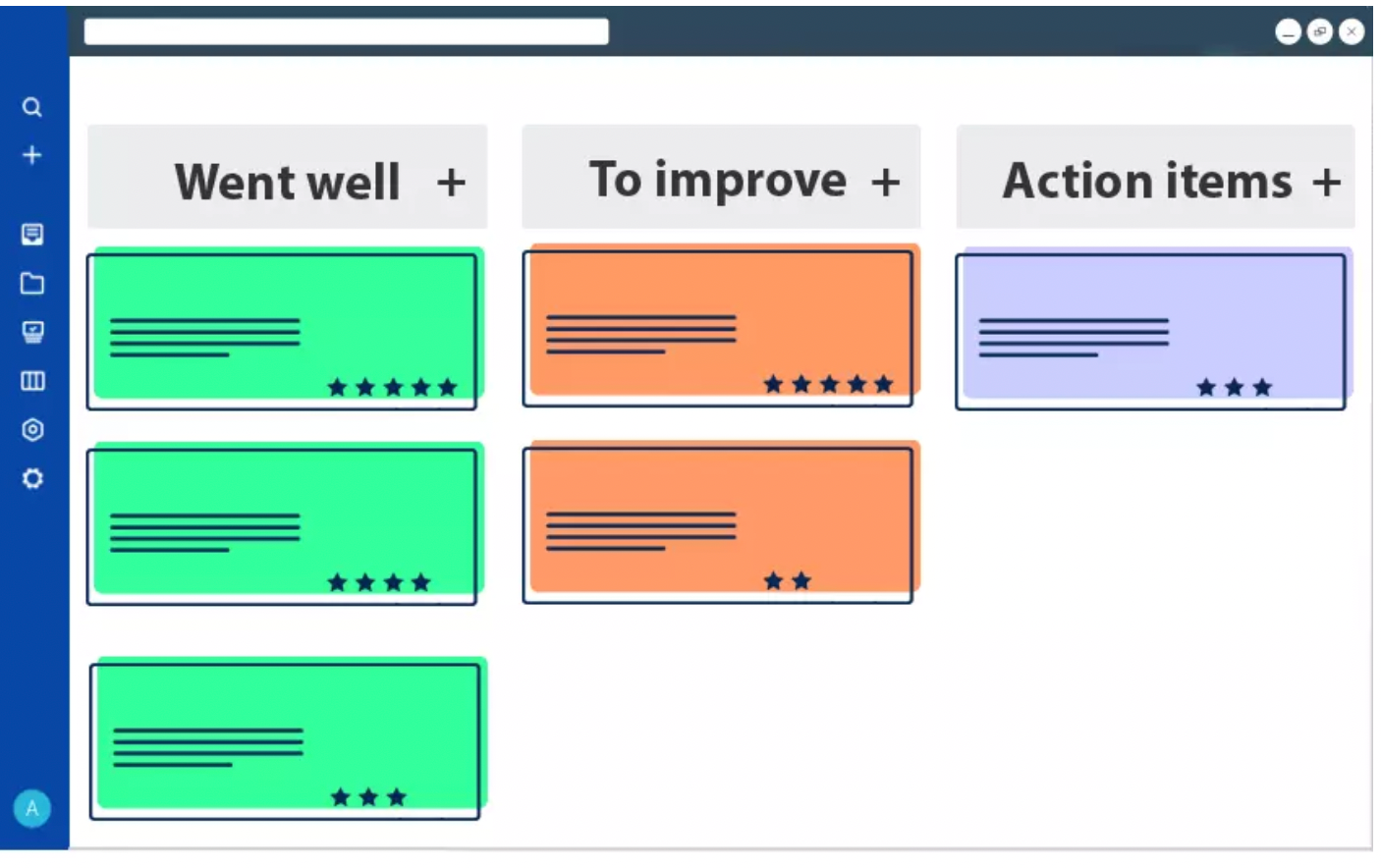The same procedure as previously, but this time in a new column. ### What is Retrospective Meeting is?
Retrospective is a meeting with your development team where you go through the most recent sprint. The objective is to conduct a self-evaluation, spot areas for improvement, and then draft a strategy for implementing those opportunities. You get an opportunity to consider each sprint's trip during the retrospective. And when conducted properly, this gathering can aid groups in developing and ultimately directing them in the appropriate direction.
In the retrospective meetings, three main topics are covered:
- What would you start doing?
- Which would you stop doing?
- What would you continue to do?
Who attends the sprint retrospective meeting?
The meeting is attended by every member of the Scrum team, including the product owner and Scrum master. The meeting is often facilitated by the product owner or the Scrum master.
What is the duration of the sprint retrospective meeting?
The length of this conference is determined by a number of variables, including: how long the sprint lasted, how big the team is, and whether they work together on-site. Typically, meetings last anywhere from 45 minutes to 3 hours.
Sprint Review Meeting VS Retrospective Meeting

Preparation for the meeting
One of the most important key is to that everyone is aware of the expectations and is on the same page. An introduction prior to the conversation helps team concentrate on going over the previous sprint. Along with announcing the duration of the meeting, you indicate the sprint retrospective schedule. It is preferable to include these in the traditional guidelines or even read them out before the meeting starts:
- not to personalize opinions or point fingers at one another
- keep an open mind as you consider recommendations
- consider how you and your team can get better.
How to do a Retrospective

What worked well?
Let's go over a few of straightforward instructions from the first column of the retro to see what worked well.
- On their computer or phone, each individual should log in and be ready to complete the notes under the appropriate column
- Make sure the board column has only one idea per sticky. It is OK if the column is full of the ides.
- There should always be someone, a moderator or perhaps the scrum master, to group similar sticky notes or duplicates because some stickies may have recurrent ideas or even be similar
What could improve?
It's time to move on to the What worked well column once you've finished the What went well section. Note that timeboxing each part is something to keep in mind. To complete the stickies, spend around 5 to 10 minutes on each column.
- The same procedure as previously, but this time in a new column with the ideas of how to improve the next sprint
- Consider tightening up or improving the areas that require it most.
I want to ask about
Have a brief discussion about each sticky note after you and the team have completed the what worked well and what could improve sections so that everyone is aware of the positive and negative issues. If the someone has any question let them ask it in this section.
Voting
Vote on the issues that need to be addressed the most as a team over the course of a few minutes. Make sure you inform the team of their total number of votes, for example, 3-5 votes. After finishing voting you can prioritize the items in the board and save them to the project management tool you are using.
Wrap up
How to conclude the retrospective meeting?
- To guarantee that everyone is in agreement with the outcomes, quickly summarize the whole discussion
- To determine what should be changed in the following Agile sprint retrospective, ask the participants what they enjoyed about this meeting.
Keep in mind that there is no ideal retrospective procedure. Think of it as an experimental, iterative process where you are trying different things to see what works best for the team.
